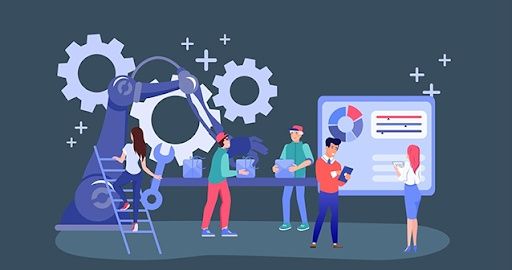Automate Tasks with AI: A Beginner’s Guide to Tools, Tips, and Use Cases
Artificial Intelligence (AI) task automation refers to the use of algorithms and machine learning technologies to perform repetitive, routine, or decision-based tasks with minimal human input. From managing email responses to organizing data and streamlining customer support, AI tools can now handle a wide range of functions traditionally done manually.
AI task automation exists to save time, reduce human error, and boost productivity in both personal and professional environments. The availability of user-friendly platforms has made automation accessible to beginners, entrepreneurs, small businesses, and remote teams, not just large corporations.

Why AI Automation Matters Today
AI automation is no longer just a futuristic concept it’s a practical necessity for staying competitive and efficient in today’s fast-paced digital world. Here’s why it matters:
-
Time-saving: Automating repetitive tasks frees up time for strategic thinking and creative work.
-
Improved accuracy: AI reduces human error, especially in data-heavy tasks.
-
Cost efficiency: Small businesses and startups can operate leaner with fewer manual operations.
-
24/7 operation: Bots and AI tools don’t need breaks, offering continuous service.
-
Personal productivity: Individuals can automate calendar scheduling, reminders, and email sorting.
Who benefits?
Everyone from freelancers and small business owners to corporate teams and educators. Industries like marketing, finance, HR, healthcare, and logistics are especially gaining from task automation.
Recent Trends and Developments (2024–2025)
AI automation continues to evolve rapidly. Several key developments from the past year include:
| Year | Development | Impact |
|---|---|---|
| 2024 | Integration of AI in Microsoft 365 Copilot and Google Workspace | Everyday productivity tools now support smart suggestions and task automation |
| 2024 | Rise of no-code/low-code AI platforms | Non-developers can build custom automations without coding |
| 2025 | OpenAI’s GPT-based automation integrations | AI-powered content, summarization, and email management became more accurate |
| 2025 | Increasing use of AI in customer service bots | Businesses deploy smarter chatbots with emotional recognition and multi-language support |
Legal and Policy Considerations
While AI automation offers many advantages, it’s important to be aware of the legal and regulatory environment. Here’s how policy is shaping automation use:
-
Data protection laws: GDPR (Europe), CCPA (California), and India’s Digital Personal Data Protection Act (DPDPA 2023) regulate how personal data can be used in automation processes.
-
AI transparency guidelines: Governments are encouraging transparency in automated decision-making, especially in hiring, finance, and healthcare.
-
Workplace regulations: Some countries are considering laws to ensure ethical AI usage in employee monitoring and automated decision systems.
Users and businesses must ensure compliance when using AI to process personal or sensitive data.
Common Tools and Resources for Task Automation
There’s a growing number of AI tools that beginners can use without coding or deep technical knowledge. Here’s a categorized list of popular tools:
Personal and Office Productivity
-
Zapier – Automates workflows between apps like Gmail, Slack, and Google Sheets.
-
IFTTT – Connects apps and devices to automate daily actions.
-
Otter.ai – Converts speech to text in real-time for meetings and interviews.
-
Reclaim.ai – Smart calendar assistant for task blocking and scheduling.
Marketing and Content Creation
-
Copy.ai / Jasper.ai – AI writing assistants that automate email drafts, blogs, and social media posts.
-
SurferSEO – Optimizes content for SEO using AI-driven suggestions.
-
Lumen5 – Creates videos from blog posts automatically.
Customer Support and CRM
-
Tidio / Intercom – AI chatbots that respond to customer queries 24/7.
-
HubSpot – Uses AI to automate marketing emails, sales pipelines, and support workflows.
Data and Admin
-
UiPath / Power Automate – Robotic Process Automation (RPA) tools for advanced task automation like invoice processing or data entry.
-
Notion AI – Enhances productivity with AI-generated summaries, ideas, and notes.
Example Use Cases for Beginners
Here are some practical use cases that even beginners can start with:
| Task | Tool | Result |
|---|---|---|
| Automatically save email attachments to cloud | Zapier or IFTTT | Organized cloud storage |
| Summarize meeting notes | Otter.ai or Notion AI | Ready-to-use action points |
| Create social media posts from blogs | Copy.ai + Lumen5 | Faster content distribution |
| Automate calendar scheduling | Reclaim.ai | Balanced workload and free time |
| Respond to FAQs on websites | Tidio chatbot | Better customer engagement |
Frequently Asked Questions (FAQs)
Q1: Do I need to know how to code to automate tasks with AI?
No. Many tools now offer drag-and-drop or no-code interfaces, making it easy for non-technical users to create automations.
Q2: Is AI automation safe to use with personal data?
Yes, but it’s essential to use reputable tools that comply with data protection laws like GDPR or CCPA. Always check the privacy policy of the platform.
Q3: How much do AI automation tools cost?
Many tools offer free tiers with limited features. Paid plans typically start from $10 to $50/month depending on features and usage.
Q4: Can AI replace human jobs entirely?
AI is more effective at handling repetitive or data-heavy tasks. It supports human workers rather than replaces them in most use cases, especially in creative, emotional, or decision-heavy roles.
Q5: What’s the difference between automation and AI?
Automation performs tasks based on pre-set rules. AI adds a layer of “intelligence” by learning from data, making predictions, or adapting to new inputs.
Final Thoughts
AI-powered task automation is a practical, accessible tool for anyone looking to streamline their daily routines, save time, and boost productivity. With ongoing advancements in technology and increasing availability of beginner-friendly platforms, there’s never been a better time to start.
Whether you’re a small business owner managing customer emails or a student organizing your schedule, AI tools can help you work smarter, not harder. Just remember to stay informed, prioritize data privacy, and start with small, manageable tasks as you build your automation skills.
